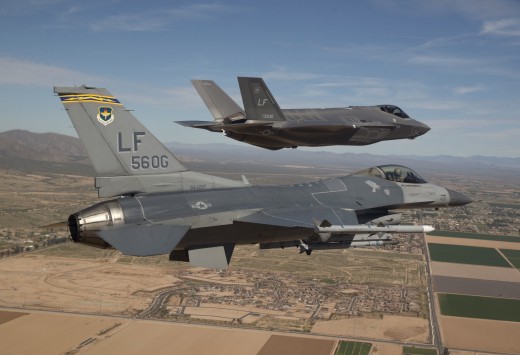
A top U.S. Air Force general says he will “fight to the death” to ensure the U.S. Air Force buys enough F-35 fighters but at the same time Gen. Michael Hostage appeared to cast doubt on the effectiveness of the Joint Strike Fighter.
His controversial comments came as Canada’s federal government appears poised to decide the F-35’s fate as Canada’s next front-line fighter.
.In an interview published in February by Air Force Times, Gen. Michael Hostage, the commander of USAF’s Air Combat Command in charge of the Air Force’s fighter fleet, called the F-35 “irrelevant” without the support of F-22 Raptors.
“If I do not keep that F-22 fleet viable, the F-35 fleet frankly will be irrelevant. The F-35 is not built as an air superiority platform,” he told the Times. “It needs the F-22. Because I got such a pitifully tiny fleet, I’ve got to ensure I will have every single one of those F-22s as capable as it possibly can be.”
The comment was seized upon by Canadian media as the federal government considers an internal report on whether to continue as a sole source partner in the JSF program or to allow open competition for the next Canadian fighter. The fundamental difference is that the F-35 is the only so-called fifth generation fighter (with advanced sensors and stealth technology) in the battle and the FA-18, Typhoon and Rafale are considered fourth generation fighters.
But while Hostage seems to suggest the F-35 is the F-22’s weak sister, he also said the F-35 is an absolute requirement for USAF to meet a coming threat from “adversaries” who are developing fifth generation jets of their own.
“I am going to fight to the death to protect the F-35 because I truly believe the only way we will make it through the next decade is with a sufficient fleet of F-35s, he said. “If you gave me all the money I needed to refurbish the F-15 and the F-16 fleets, they would still become tactically obsolete by the middle of the next decade. Our adversaries are building fleets that will overmatch our legacy fleet, no matter what I do, by the middle of the next decade.”
Lockheed Martin, which built the F-22 (production ended at 168 aircraft) and is now building the F-35. hosted Canadian media, including Canadian Aviator Editor Russ Niles, at a day-long briefing on the aircraft and the Canadian involvement in early March and defended its ability as a fighter.
It was noted that the F-35 has won all 13 fighter competitions it has entered in the last couple of years. Although its flight performance envelope is similar to all other modern fighters, the Lockheed officials stressed the fifth generation electronics and stealth as its big advantages, suggesting it could destroy its adversaries long before they see the F-35.
At the Canadian media briefing (three reporters, including Canadian Aviator attended) Lockheed Martin officials said the F-35 builds on the technology developed for the F-22. But while the U.S. government is encouraging Lockheed Martin to sell the F-35 to virtually any country that is friendly to its interests, it refuses to allow the sale of the F-22 to anyone.
An airplane that was on display for the Canadian journalists at the Fort Worth plant was the first of a new squadron of F-35s to be delivered to Luke Air Force Base in Arizona earlier this week. Luke, which is now an F-16 base, will eventually have 144 of the F-35s.
